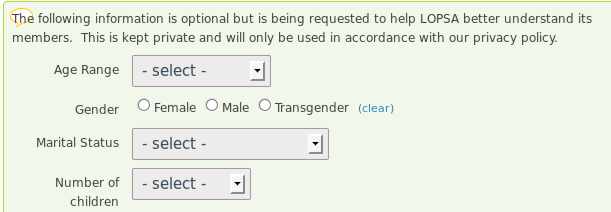With Manning announcing that she'll spend her 35 years of incarceration as a self-assigned woman, the US is getting a brief look at a particularly nasty state of affairs that been there for years. The US Army does not provide any treatment services other than mental health for people with Gender Identity Disorder. Which means Manning will spend her 35 years in a men's prison with no access or hormones, surgery, or even simple hair-removal.
If you dig out the big coverage document that came with your (US-based) health-care plan (assuming you even have one) there is a section you probably never bothered to look at titled EXCEPTIONS. This is the list of things that the plan will NOT cover. This is the list that tells you that, no, they won't cover things like:
- Going to Aruba for your (otherwise covered) kidney transplant.
- Costs related to medical studies of pre-market drugs and treatments.
- Costs relating to anything the FDA labels as 'Experimental'.
- Purely cosmetic procedures.
There is something else that almost always shows up on this list that really, really gets in the way of treating people like me and Chelsea Manning.
- Costs related to treatment of Gender Identity Disorder.
Yep, even though the DSM recognizes GID as an actual treatable disorder, and there is even a widely accepted treatment protocol for it, it's explicitly not covered in most plans. It has been this way for decades. By the protocol, treatment of GID requires interaction with three different medical professionals:
- Mental health professionals who guide the person through the whole process.
- Endocrinologists for the administration of hormones.
- Surgeons for any surgeries that may be needed.
My current plan covers only the first step. They'll happily talk me out of it, but won't cover any actual medical interventions. This is the same coverage that Manning will get.
My plan at WWU didn't cover any of it. This is progress of a sort, but only a grudging one. Hormones and Endocrinologist visits are thousands of dollars a year. Surgeries such as double mastectomies will be completely out of pocket and can easily end up close to $10K. Hair removal takes years and multiple treatments (hair grows in cycles, you see).
Employers have to specifically negotiate coverage, which some do. San Francisco made news several years ago when they started covering the full costs. Several large tech companies advertise that they do so as well. It can be done, the effort just has to be taken.
Why is this protocol treated so very differently than anything else?
Dicks, but I'll get to that.
The only other thing that got even close to the exclusions of GID coverage is:
- Ovariohysterectomies in women under 30
And even that has fallen off in recent years.
Way back in the 1960's when the male-to-female surgery first became generally available, people started doing it. It was very scandalous since men were cutting off their dicks. Unfortunately, some of those transitioners experienced buyers remorse and learned that the surgery is a one way street, and the results aren't as good as the imagination suggests. And some of those remorse sufferers suicided.
Cue the epic pearl-clutching.
Something had to be Done, and Something certainly Was Done. Regulation started to fall down on this elective surgery in a haphazard way. It was in light of this that the Harry Benjamin Standards of Care were created in the 1970's, as a way to provide a widely accepted protocol for treatment. It worked.
However, those suicides haunted the insurance actuaries. Wrongful death suits are really, really expensive. Treating GID can lead to death, therefore, we won't cover it. QED.
That was 40 years ago, though.
One of the big reasons those early transitioners suicided was regret over not being able to have kids. The BSC is big on making clear that sterility is one of the side effects of transition, and is a major component of the mental health requirement being satisfied before going on hormones.
However, we've gotten a lot better at reproductive technology in the last 40 years. Sperm donation is a lot easier than it used to be, and they're viable longer. Egg donation is a thing now. I've known transitioners who've done gamete donation before taking the sterilization steps because of plans for maybe-kids later on.

Numbers are illustrative, not scientific. Do not cite.
40 years ago society was a lot more divided along gender lines and the concept of genderqueer wasn't really a thing. You were either male or you were not (things were also a weensy bit more sexist too), there was no between. It was a much more gender essentialist time. Men transitioning to women were told to always wear skirts, grow their hair out, and learn how to be demure (failure to comply could mean not getting access to hormones). Never mind that gender performance varies considerably even among those who never question their gender, that's a pointless detail; these people need to over-perform in order to pass at all.
Another reason those transitioners suicided was because they were crammed into a role they didn't want to fit into. Perhaps they didn't want to change their job from the one they spent 20 years in to one more in line with Women's Work like teaching, but that's what the therapists demanded... and ended up hating it. And wanting the old life back, just different. But that's impossible so...
Speaking from direct personal experience, having between be an option really takes the stress out of many people who are in the middle of the gender spectrum. Not having to be shoved into a -8 or +8 on the spectum in order to have the gatekeeper open the door for you takes a lot of the stress out of the process.
The assumptions of 40 years ago no longer hold true, and it's time for that needless exclusion to be dropped.
We're getting more people suiciding from untreated GID than we ever did for treated. The continued presence of this health-care exclusion is unexcusable discrimination.

